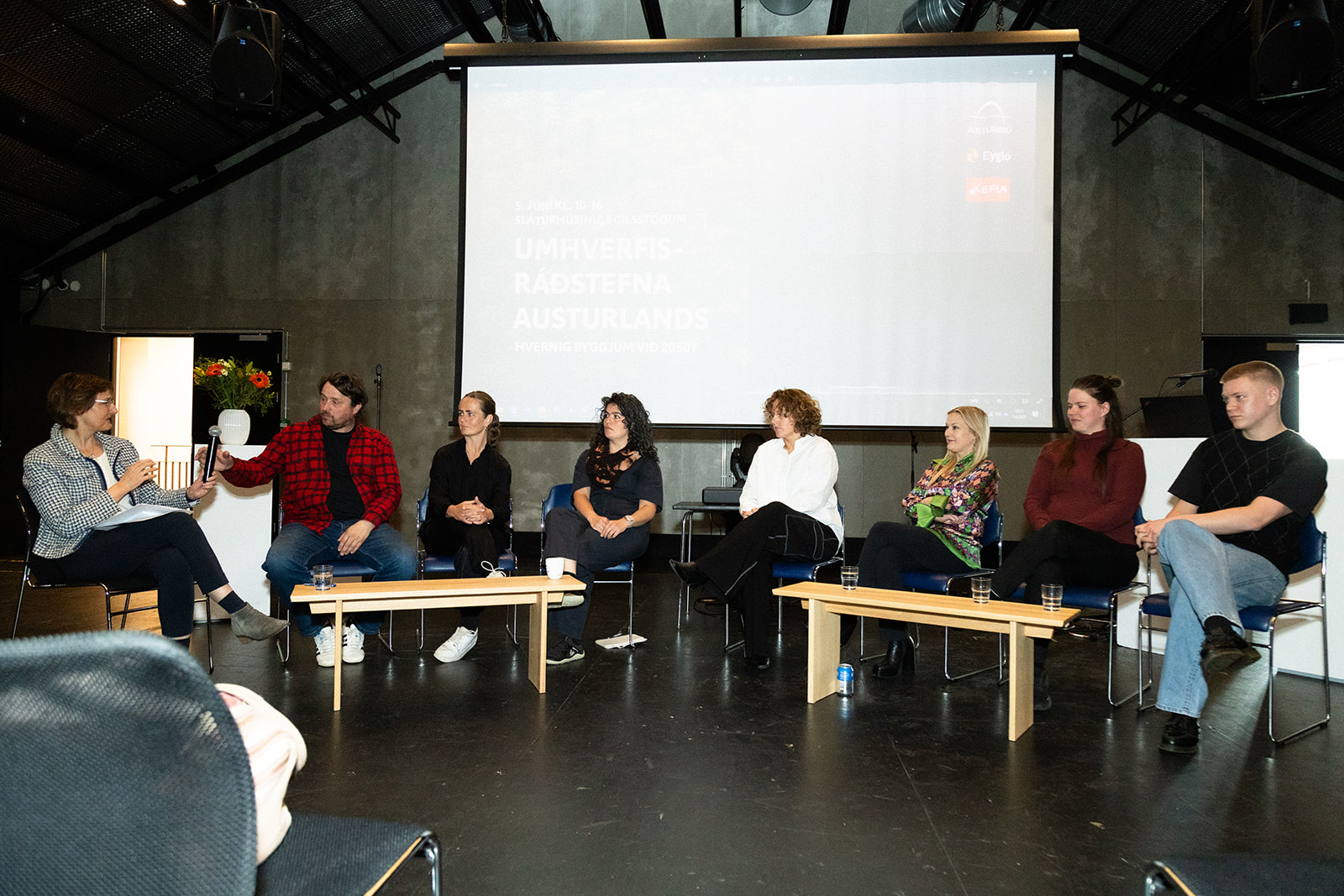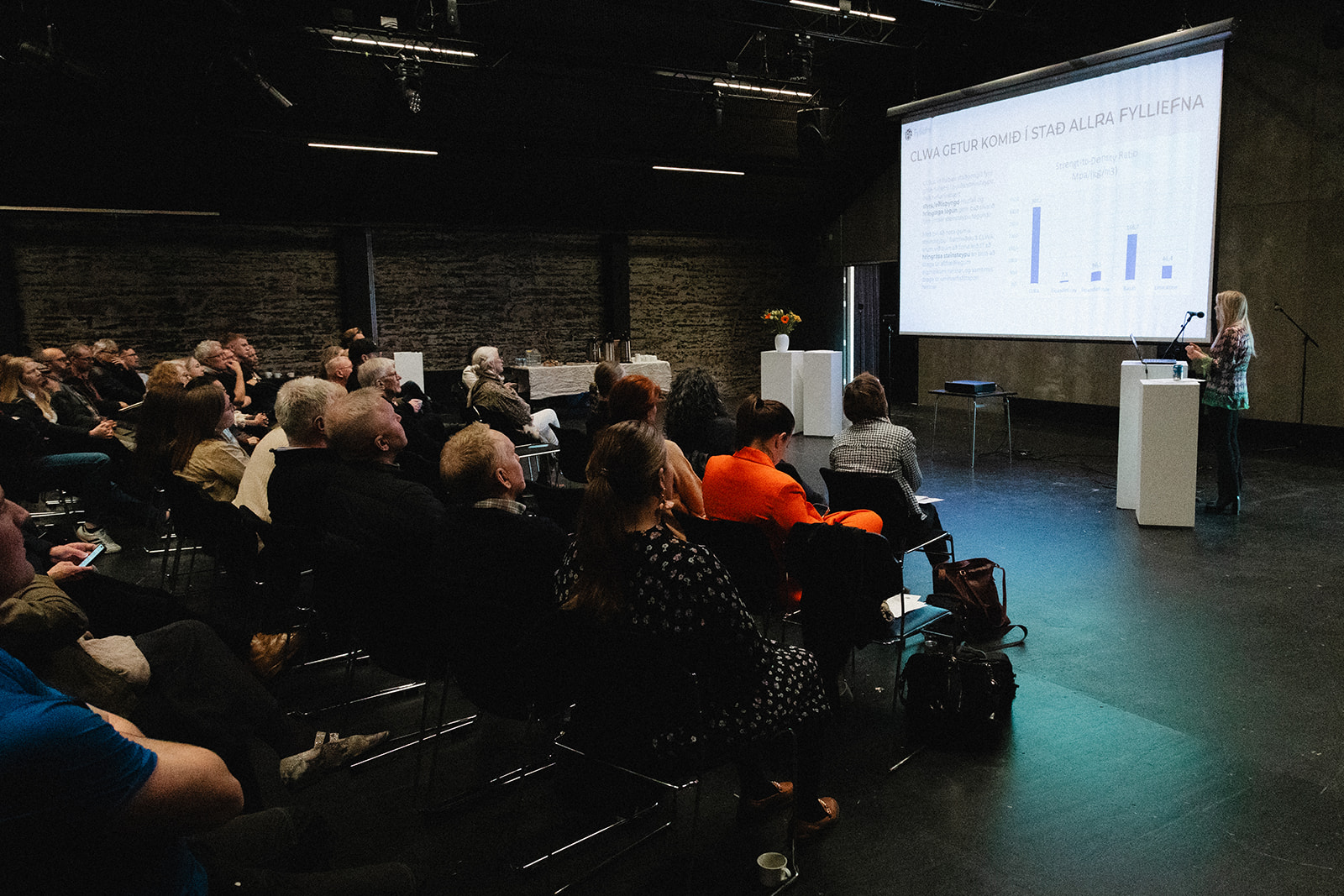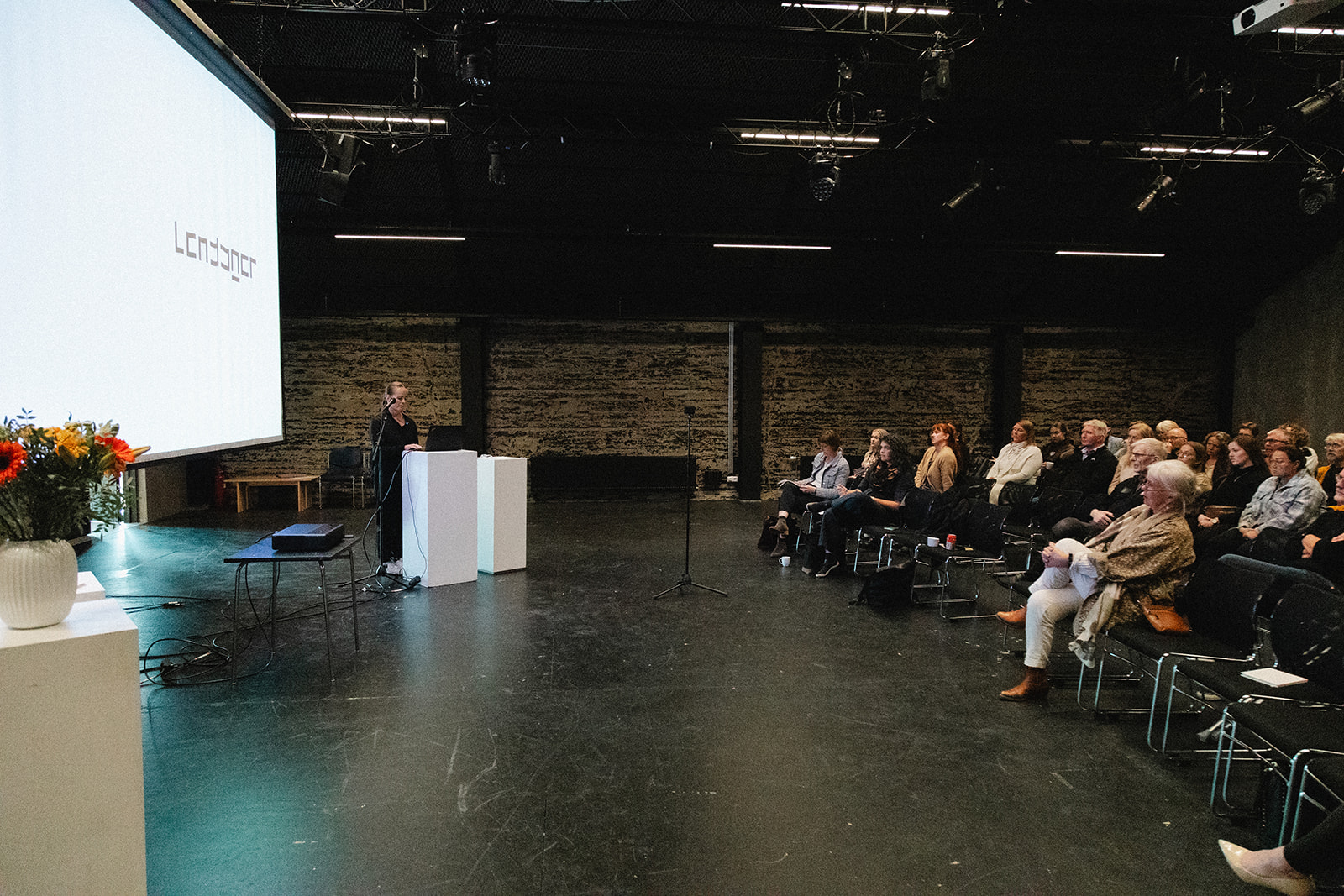Built for the future: successful conference of Eygló, Austurbrú and EFLA in Egilsstaðir
12.06.2025We can utilise all materials so much better.
The East Iceland Environmental Conference was held for the first time on Thursday, 5 June, on World Environment Day. The conference was a collaborative project between Eygló and Austurbrú, in partnership with EFLA, and the intention is to hold it regularly with a new theme each time.
This year’s conference was titled “How Do We Build 2050?”, and aimed to explore how urban planning and material choices in construction will evolve in the future. The conference was held at Sláturhúsið in Egilsstaðir – a building that is a great example of how existing structures can be reused and adapted for new industries and societal needs, instead of being demolished and replaced with new builds.
Diverse and insightful presentations
Experts from various fields shared perspectives on the future of settlements, planning, and material selection in construction.
Alexandra Kjeld, environmental engineer at EFLA, opened the programme with her talk Value in the Built Environment. She discussed how life cycle assessments can be used to understand the environmental impacts of buildings and support informed decision-making. From autumn onwards, such assessments will be required for all construction projects needing building permits.
Smári Þórhallsson, geographer and one of the initiators of a new settlement core in Fljótsdalur, presented the Hamborg project – a vision of a new village in Fljótsdalur, where the interplay of nature, settlement, and community is central to this small municipality.
Jóhanna Helgadóttir, urban planner and architect at Nordic Office of Architecture, presented an example of nature-based design in Blikastaðaland in Mosfellsbær. There, the emphasis is on environmentally friendly planning and connecting the built environment more closely with the natural landscape and ecosystems – allowing the character of both land and settlement to shine.
Gunnlaugur Guðjónsson, division manager at Land og Skógar, discussed Iceland’s timber resources and their future potential in the construction industry. His talk highlighted the importance of using local materials, and that by 2050, Iceland should be self-sufficient in building materials.
Sunna Ólafsdóttir Wallevik, chemist and founder of Gerosion, talked about environmentally friendly concrete and the development of new building materials that use Icelandic resources in a sustainable and cost-effective way. She stressed that all material can be used – we just need to find a way to process and reuse it. For instance, materials once classified as waste decades ago now hold high value as cement substitutes.
Arnhildur Pálmadóttir, architect and recipient of the 2024 Nordic Council Environment Prize, closed the conference with an inspiring presentation on reusing building materials. She demonstrated how it’s possible to design for reuse from the beginning – reducing waste and the carbon footprint of buildings. Arnhildur advocated for a circular approach in construction and argued that the best approach is not to build new at all, but to reuse what already exists.
The atmosphere at the conference was characterised by constructive dialogue, where different perspectives met – from East Iceland’s business sector, municipalities, and academia. Attendees participated actively in discussions and questions, clearly showing a strong interest in approaching planning and construction with sustainability and local conditions in mind.
We would like to thank everyone who contributed to the conference and hope that this successful day marks the beginning of a new way of thinking about planning in East Iceland.



